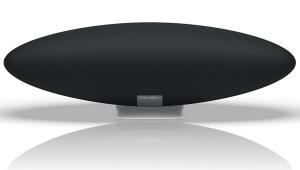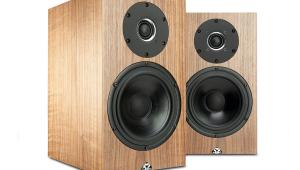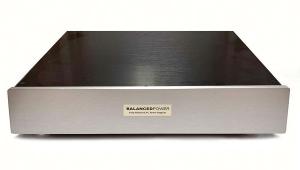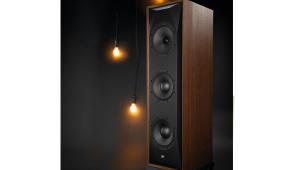PMC twenty5.21

 When is a replacement not a replacement? This slightly abstract question comes about as a result of the loudspeaker you now see before you. When PMC started work on the twenty5 range, the intention was to replace the well-regarded twenty series models. But it very quickly came to the realisation that the speaker it was developing had the potential to be considerably better if the range was repositioned to sit between the twenty series and the equally lower-case fact range. The result is that the twenty series continues as before with simplified finishes and a reduced price, while the twenty5 series arrives as a range in its own right.
When is a replacement not a replacement? This slightly abstract question comes about as a result of the loudspeaker you now see before you. When PMC started work on the twenty5 range, the intention was to replace the well-regarded twenty series models. But it very quickly came to the realisation that the speaker it was developing had the potential to be considerably better if the range was repositioned to sit between the twenty series and the equally lower-case fact range. The result is that the twenty series continues as before with simplified finishes and a reduced price, while the twenty5 series arrives as a range in its own right.
The two ranges may look similar at first glance, but they have almost no parts in common with one another. More significantly, the latest speaker has some elements that are new to PMC as a company. The basics remain intact – the twenty5.21 is still a two-way standmount that partners a 140mm mid/bass driver with a soft dome tweeter. It still has a folded transmission line that augments the bass response. After this, though, the changes come thick and fast.
The transmission line is much the same shape and length as before but it now benefits from PMC’s Laminair technology (see box out), which has been developed to reduce air turbulence in the mouth of the transmission line and therefore increase the efficiency of the airflow through the line and boost the efficiency of the driver at the same time. The greater efficiency of the airflow also reduces the audibility of the moving air with obvious benefits on the performance as a whole.
The mid/bass driver that is the main recipient of the benefits of this new transmission line is all new. For the first time in any of its products, PMC has moved to a glass fibre weave for the driver material with attendant benefits in stiffness and response. The dust cap is also revised to become an inverted type, which is claimed to produce a better seal with the rest of the driver and provide an extremely smooth impedance transition along the profile of the cone.
To take advantage of the new cone’s abilities, it is mated to a long-throw voice coil that allows for greater excursion and low-frequency extension. To keep this under control, the spider (the mount for the driver in the assembly) has been designed to reduce the velocity of the driver at maximum excursion. This reduces breakup and other associated nastiness and effectively acts as a sort of mechanical soft clipping circuit. The final development is that the cone neck is now vented (a process that called for considerable engineering finesse to keep the required strength to the design), which serves the dual purpose of reducing air compression under the dust cap and keeping the magnet cool by using this air.
The famous five
The work on the tweeter is less extensive, but still enough to ensure that it won’t let the side down. Based on a unit produced by Norwegian company SEAS, the principle evolution for the twenty5 series is the addition of a new 3D-modelled grille that has been designed to allow for optimum dispersion. By far the most notable aspect of the tweeter, however, is its relationship with the mid bass driver. PMC has opted to crossover with the larger driver at 1.8kHz, which is unusually low for a two-way design.
To achieve this, the crossover is all new and features a steep roll-off to ensure that this transition point is as ‘clean’ as possible. The crossover itself is made from a military-grade glass fibre board with extremely hefty copper tracks that are designed to ensure that it doesn’t reduce the efficiency of the speaker. All components used are carefully matched and then hand assembled. One other significant revision for the twenty5 range is that it reverts to being single wired.
The single pair of speaker terminals on the back is PMC’s own design and is also new for this series. They are machined from copper and then Rhodium plated for longevity, and look and feel excellent. They sit on a back panel produced in part from non-magnetic stainless steel that is given a stunning polished finish. While this is a bit of a fingerprint trap, it does look and feel extremely smart. The rest of the cabinet is MDF and feels extremely solid.
Indeed the twenty5.21 as a whole is a very handsome speaker. PMC has managed the neat trick of ensuring that the new model is indisputably a PMC offering – details like the rectangular aperture for the transmission line and the staggered cabinet give it some clear visual clues and a tie to other members of the range – while also marking it out as clearly different to what has gone before. The Laminair vents in the port aperture are smart and the new mid/bass driver also looks elegant and well finished. As you might expect, the build quality is of a consistently high standard and while you can buy bigger and showier speakers for the same price, there aren’t many that are as well constructed.
Some quirks of setup that I have encountered in the past with PMC speakers have survived into the twenty5.21. Positioned relatively far apart from one another in my listening room, they give by far the best results with a relatively aggressive level of toe-in that has the sound crossing over at a point a foot or so behind my head. Otherwise, the speaker is usefully well behaved and seems fairly unconcerned by proximity to walls. Impedance is quoted at 8ohm and sensitivity at 86.5dB, which should be more than sufficient to allow the twenty5.21 to play nice with most amplifiers although it still seems at its very best with a bit of power behind it.
With a Naim Supernait 2 and ND5 XS streamer (HFC 352) acting as partnering electronics and the speaker placed on a pair of PMC’s own stands (£295), the twenty5.21 provides a sonic performance that’s every bit as impressive as its looks.
Sound quality
This is still unmistakably a PMC speaker in that the bass response is simply extraordinary considering its fairly modest dimensions. A 16/44.1 download of the Chemical Brothers C-h-e-m-i-c-a-l has a punch to it that is utterly at odds with such a small and slender cabinet.
And this isn’t something that only works with high-energy electronic material. The scale of the orchestra in Fink meets the Royal Concertgebouw Orchestra’s Berlin Sunrise is reproduced without any sign of strain or artificial augmentation. At the same time, there is no sense at all of there being a bass port of any kind present, which suggests that the work that has gone into the business of air management has paid off.
Where the twenty5.21 differs somewhat from its predecessors is that there is a sweetness to the midrange and upper registers that I’ve previously only really experienced on rather more expensive PMC models that benefit from the bespoke dome midrange driver that the company uses. Fink’s vocals have a richness and texture to them that draws you into the performance and positively encourages you to keep listening. What is clever about this is that there is no shortage of detail or feedback on the recording itself, it is simply that flaws are shown up less aggressively than they were previously.
The twenty5.21 also has an unapologetic sense of joy when required. Its rendition of The Sound Of Violence by Cassius is punchy, refined, detailed and spacious, but above all of these things it is hugely entertaining. The big synthesiser riff is infectiously lively and the sound has me wanting to turn it up and have some fun. The good news is that the PMC is more than capable of responding to you behaving like a thug and even under French electronica-induced provocation, I don’t believe I’ve experienced the spiders slowing the drivers down. If I’m being hyper critical of the performance, it might be fair to say that the twenty5.21 does its best work from moderate volume levels and upwards. At low levels, it tends to soften a little and so loses some of its exceptional low-end extension, although many of its virtues – including the detail retrieval and midrange sweetness in particular – are present pretty much from the threshold of audibility. If you want to hear what it is truly capable of, however, it’s probably best to give it a little welly.
Conversely, there are no limits to the different types of music that it is happy handling. An extended, day-long listening session takes me from the sparse simplicity of Nils Frahm to the hugely overblown outpourings of Warp Riders by The Sword, and at no stage does the speaker seem to be anything other than completely happy with its lot. It also manages to respond positively to good recordings and hi-res material while avoiding showing up too many of the failings of poorer feeds. It is completely happy running through a Spotify playlist and only seriously compressed internet radio stations will provoke it into sounding a little thin and scratchy.
Conclusion
The twenty5.21 won’t alarm the people already on board with what PMC does. The result is a speaker that has a refinement and control that takes this newest member of the family beyond what we have seen relatively affordable models achieve in the past. This is a seriously talented speaker that has to be on everybody’s shortlist at the price. ES
DETAILS
Product: PMC twenty5.21
Price: £1,870
Origin: UK
Type: 2-way standmount loudspeaker
Weight: 6kg
Dimensions (WxHxD): 162 x 340 x 284mm
FEATURES
● 27mm fabric dome tweeter
● 140mm g-weave mid/bass driver
● Advanced Transmission Line bass loading with Laminair technology
● Quoted sensitivity: 86.5dB/1W/1m (8ohm)
Distributor: PMC
Telephone: 01767 686300
Website: pmc-speakers.com
 Read the full In-depth review in issue 420
Read the full In-depth review in issue 420
 |
Inside this month's issue:
Ruark R610 music system and Sabre-R standmount speakers, PMC twenty.23i Active, floorstanders, English Acoustics Downton preamplifier, Bluesound NODE ICON preamp/streamer, Ortofon Concorde Music Blue MM cartridge and much, much more
|
















































